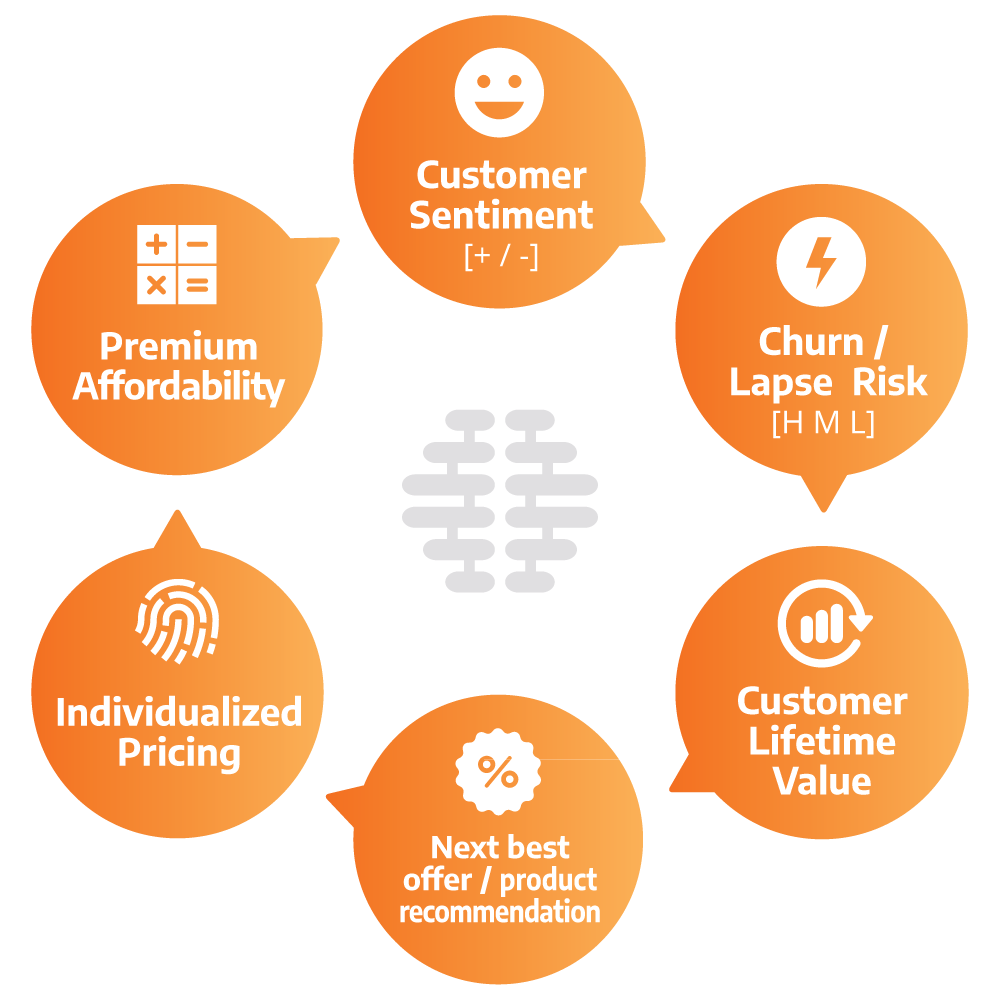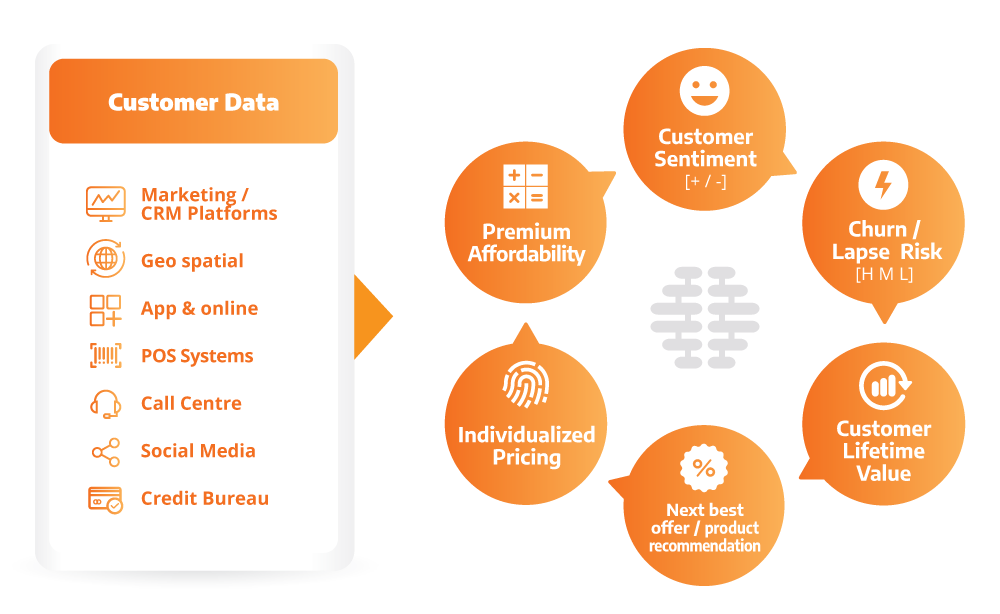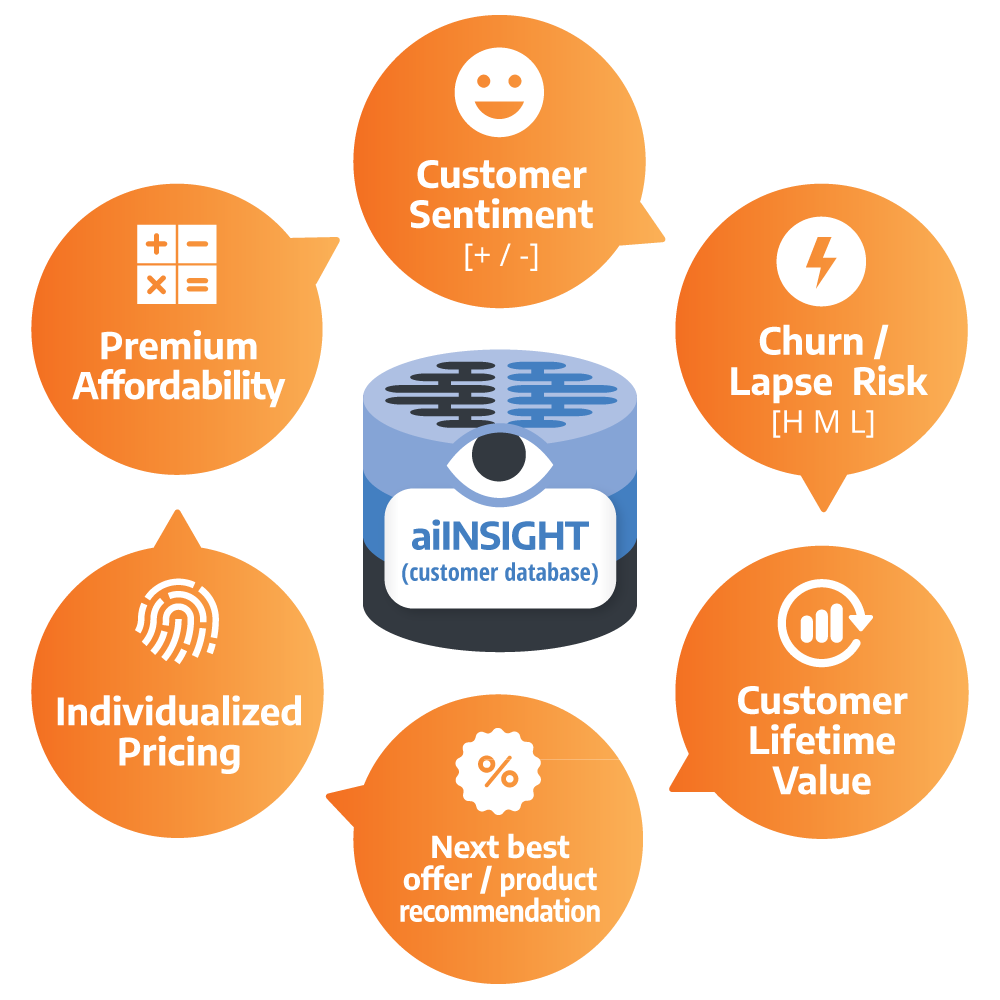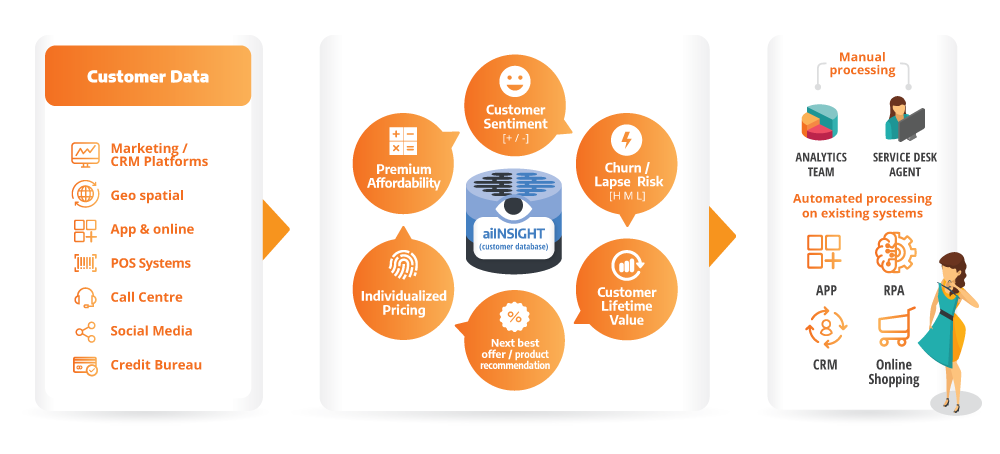5 Building Blocks for Achieving 1-To-1 Personalisation at Scale
Written by Jacques De Kock (COO, Cortex Logic)
Many people have experienced how their data is being used to tailor online marketing to their individual interests – just as marketers instinctively understand this targeting mechanism as a key driver for future marketing success. However, the personalisation journey started a long time ago. Organisations around the world have been trying ‘personalisation’ for decades and, in most cases, the experience has been impersonal and irrelevant for consumers – much of this has been down to immature technology.
There has never been a better time than now, with the breakthrough in Artificial Intelligence and Machine Learning, to really do this well. This technology enables us to ‘connect the dots’, go beyond mere intelligent customer marketing and reshape the customer experience – using AI, fueled by ‘big data’ to deliver customer insights, in real time, at scale. It calls for a complete re-think of how customers interact with businesses in individualised or personalised ‘customer journeys’ across all channels or ‘touchpoints’.
Personalisation is, therefore, about changing and improving the customer’s journey with a clear understanding of how that drives acquisition, sales, margins and customer retention. It’s also about knowing what each customer wants, how they want it, and being where they are at the right time.
Here are 5 key building blocks for achieving 1-to-1 Personalisation at scale:
BUILDING BLOCK 1: DEFINE PERSONALISATION GOALS FOR YOUR CUSTOMER
Organisations have become much more thoughtful about the sensitive aspects of the consumer experience – such as control and trust. And, we now also have laws such as GDPR and POPIA. So, as a start, personalisation enabled by AI has to remain consistent with your purpose, values and brand.
Personalisation can also mean different things to different people across industries. To help understand personalisation in practice, below are some examples from recent Cortex Logic projects:
BANKING: A bank’s credit division is disrupting the market by changing its loan pricing strategy to a personalised model by targeting potential high value customers with the most competitive price offers. The potential customer life-time value for a new customer is calculated and matched to a conversion target, in line with growth plans for each customer segment. Personalised price points are calculated dynamically and offered to achieve the conversion targets.
INSURANCE: An insurer wants to radically reduce early policy redemptions and runs a live ‘flight risk’ score for each customer using personal data, including email and call centre interactions. When they detect certain keywords, they consider that customer a high ‘flight risk’ and the customer team is alerted. They have also used this insight to improve key operational issues.
RETAIL: A retailer is building a personalised shopping journey that smoothly integrates the customer experience across offline and online channels. They’re achieving higher customer conversion, basket values and retention through personalised email and mobile app offers that incentivise specific shopping behaviour. They have truly taken marketing below the line by offering shoppers personalised deals they can’t find anywhere else. This makes it much harder for competitors to match their pricing and promotional strategy – in a tight consumer environment, this delivers a higher ROI on discounts offered.
BUILDING BLOCK 2: SELECTING PREDICTIVE CUSTOMER ANALYTICS
At the heart of personalisation are increasingly sophisticated algorithms and predictive models that analyse transactional, behavioural and demographic data, including digital-media trends. According to McKinsey & Co, 35% of what consumers purchase on Amazon and 75% of what they watch on Netflix, come from product recommendations based on such algorithms. In order to enable such personalisation, it’s imperative to work out exactly what you need from your predictive analytics models, know what each model entails and how they interact with each other.
At Cortex Logic, we have found that it is crucial to start with the end in mind and develop a ‘customer predictive analytics roadmap’ that informs how, over time, you will develop the capabilities to achieve 1-to-1 personalisation across different business scenarios. For example, determining the potential life-time value for each customer upfront could have significant bearing on the products and services offered next and at what individualised price. Similarly, this could also cast a new light on service priorities when reviewing individual sentiment or churn risk scores.

FIG 1: Cortex Logic’s Typical Predictive Analytics Models in aiPersonalise.
BUILDING BLOCK 3: INGESTION OF CUSTOMER DATA ACROSS CHANNELS AT SCALE
Predictive analytics is typically fueled by customer data captured and processed across both online and offline touchpoints. It requires data from existing and ‘structured’ sources to new and ‘unstructured’ sources, such as social media, to capture the complete customer life-cycle. For online channels, you should also track anonymous visitors – Google plays a key role as the largest source of such data in this regard.
You may also want to augment customer data with other AI-based applications, such as Natural Language Processing (NLP), to pick up customer sentiment from text-based inputs (e.g. email, social media) and voice data from call centres for signals of dissatisfaction or increased interest. Capturing customer data across such a diverse ecosystem is easier said than done – you need to consider data quality, high volumes from various digital channels, real-time scenarios and avoid rework every time you build a new predictive model. Depending on the scale of your business, an upfront investment in the right ‘big data’ architecture to receive and organise data will be needed.

FIG 2: Potential Customer Data Sources
BUILDING BLOCK 4: ESTABLISH A CENTRAL DATABASE FOR CUSTOMER INSIGHTS
The first challenge is that the effectiveness of your predictive analytics is highly dependent on the accuracy of the data input. Traditional CRM’s are not good at maintaining data quality, so if you’ve already invested in ‘upstream’ processes and systems to achieve data integrity, it’s a solid starting point. The second challenge is that predictive models use real-time transactional and behavioural data from multiple channels. You not only need to capture this data but also organise it into a single, reliable ‘source of truth’ owned by your marketing team – a ‘central customer database’.
To acquire such a central customer database, one can either take a Data Management Platform (DMP) or a Customer Data Platform (CDP) approach, both aimed at organising customer data, receiving and sending data to and from other systems. The approach largely depends on what you want to use it for. DMP’s have been around for a while, often part of digital marketing platforms, and works almost exclusively with anonymous entities such as cookies, devices and IP addresses typically used by marketers in ad-targeting. The newer generation CDP’s work with both anonymous and ‘personally identifiable information’ such as names and email addresses. According to Gartner, it’s a marketing system that unifies a company’s customer data from marketing and other channels to enable customer modelling and optimise the timing and targeting of messages and offers.
CDP’s therefore generally cover a wider set of data needed to deeply understand customer behaviour across channels and richer marketing functionalities. This is needed for use with AI predictive analytics, in order to construct a dynamic picture of each customer, including lifestyle or event-based triggers, that can be used automatically in ‘downstream’ CRM or marketing platforms.

FIG 3: Role of Customer Database (E.g. aiInsight)
BUILDING BLOCK 5: TAKE ACTION WITH EASY INTEGRATION TO ‘DOWNSTREAM’ SYSTEMS AT SCALE
With a firm grip on each individual customer’s profile and with targeted marketing content, tailored offers and effective pricing, it’s time to take action. Your offers or content may be personalised, but you need to communicate this at scale and track success. This is more complex if you want to track customer journeys across both offline and online worlds, but can be done through systems such as traditional CRM’s or online platforms. These can and will evolve over time, requiring a flexible ‘API’-based approach to integrate with current and future processes and systems.
IN CONCLUSION:
To turn personalisation into reality ,you will need two things: (1) A clear set of goals of what you want to achieve, (2) plus the right ‘plumbing’ elements in technology, people and process to make it work at scale. Figure 5 weaves the picture together – showing the key elements of ‘plumbing’ needed to transform your customer’s experience into a highly personalised journey.
There are a number of critical success factors in implementing these technologies. At Cortex Logic, we believe an ‘experimental’ approach often works best when introducing advanced technologies into an organisation – a ‘test-and-learn’ approach in order to scale up more effectively. It also allows you to work through the softer issues such as people, jobs and the ‘explainability’ of decisions to ultimately gain a competitive advantage.

FIG 5: End-to-End Execution of Personalisation at Scale
LET’S GET PERSONAL…
Should you wish to find out how Cortex Logic can help YOU personalise at scale, submit your details below and we’ll get in touch with you directly:
ABOUT CORTEX LOGIC
Cortex Logic, a division of Cortex Group, is an Artificial Intelligence (AI) Software and Solutions company that helps businesses in banking, insurance, asset management, telecommunications and retail use data, with advanced AI technology, to gain a competitive advantage – and, ultimately, THRIVE in the Smart Technology Era. We work across multiple business and industry domains seeking to augment and automate legacy processes, ultimately transforming them into intelligent systems, using the Cortex Logic AI Engine.
We leverage this unique AI Engine for Business to solve strategically and operationally relevant problems by unlocking the value offered by the 4th Industrial Revolution and by mobilizing Data Science, Internet of Things (IoT), as well as Big Data and Analytics. We also help clients operationalize real-world Artificial Intelligence, by unlocking value from all available structured and unstructured data, as well as provide support through change programs in order to deliver the step change and business advantage AI-based technologies and solutions offer. Throughout this process, we build an incremental maturity roadmap, ensuring clients’ cognitive competency delivers value from day one and beyond.
Within our AI Engine for Business, we have four core solution domains, each with a range of products that can transform key business processes using Artificial Intelligence:
- Engage: Helping people and businesses work smarter at scale.
- Personalize: Smart personalization of consumer products and services.
- Enhance: Smart automation and enhancement of business processes and systems.
- Sense: Enabling smart machines to sense and interpret the world around us.





